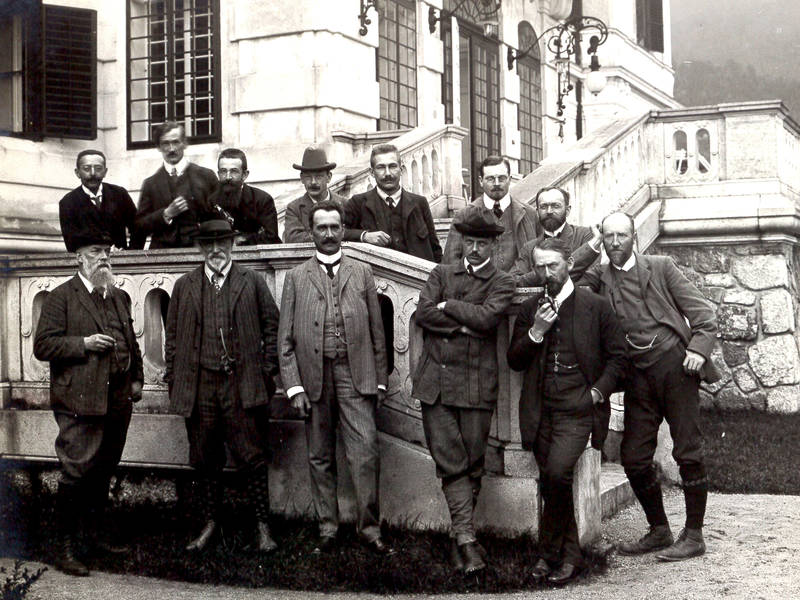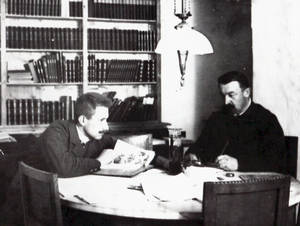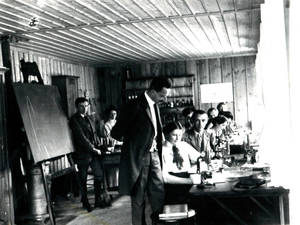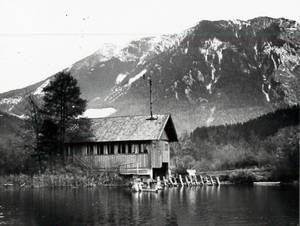





Limnological research has been tightly linked to the location of Lunz for more than hundred years. In 1905 Carl Kupelwieser founded the „Biological Station Lunz“. Since then there developed an international distinguished center for aquatic research around the lake and its surroundings in Lower Austria.
International research center troughout the 20th century
Scientists such as Franz Ruttner, August Thienemann or Carl Wesenberg-Lund – all of them well known worldwide for their fundamental contributions to lake ecology – worked in the former „Biological Station Lunz“ (owned by the Austrian Academy of Science) and turned Lunz into an international center for limnological research. The „Biological Station Lunz“ was well known for its outstanding research in limnology throughout the 20th century.
Closing of the „Biological Station Lunz“
After radical changes at the beginning of the 21st century the „Biological Station Lunz“ was closed in 2003. But thanks to a collaboration of the Provincial Government of Lower Austria, the Federal Government of Austria and the tree partner universitys of WasserCluster Lunz the scientific legacy of the „Biological Station Lunz“ continued, even though in another building: The former „Lower Austrian Hostel“.
The WCL-building
The building, where WasserCluster Lunz is located today, was in former times a holiday camp, the „Lower Austrian Hostel“. Innumerable children from Austria and abroad enjoyed the lake and woods for decades. In 2004 the holiday camp was closed.
Reopening
The Government of Lower Austria adopted the former „Lower Austrian Hostel“ to the needs of modern research and teaching, in 2005 the reconstruction of the building started. The opening of „WasserCluster Lunz – Biologische Station GmbH“ in 2007 usherd a new era for the institution. Furthermore in 2009 the reconstruction of the former „Biological Station Lunz“ started, the building was reopened in 2011, today two of the five working groups of WasserCluster Lunz are located there. And the success story of limnological research at Lake Lunz is going on.
More about the history of limnology in Austria (in German language)
Timeline
1905 | Foundation of Biological Station Lunz (BSL) by Dr. Carl Kupelwieser
1906 | Opening of the buidling, leader Prof. Richard Woltereck
1908 | Leader Dr. Hans Kupelwieser, administrative leader Prof. Franz Ruttner
1924 | The German Kaiser-Wilhelm-Gesellschaft founds the „Verein Biologische Station Lunz“, „Austrian Academy of Science“ member of the organization
1957 | Prof. Franz Ruttner retires, Prof. Ingo Findenegg follows
1967 | Prof. Ingo Findenegg retires, new leader Prof. Heinz Löffler
1972 | Verein Biologische Station Lunz gets closed, „Austrian Academy of Science“ establishes Institute of Limnology, Leading director Prof. Heinz Löffler, BSL by now department
1977 | Dr. Gernot Bretschko becomes departement manager of BSL
1985 | Constructional expansion of the BSL by the Provincial Government of Lower Austria
1998 | Austrian Academy of Science decides the closure of the BSL
2003 | Closure of the BSL
2004 | Decision for the new location in the former „Lower Austrian Hostel“
2005 | Reconstruction of the „Lower Austrian Hostel“ starts
2007 | Opening ceremony of WasserCluster Lunz on 20th May
2009 | Reconstruction of the former „Biological Station Lunz“ starts
2011 | Opening ceremony of Biological Station Lunz on 11th September



